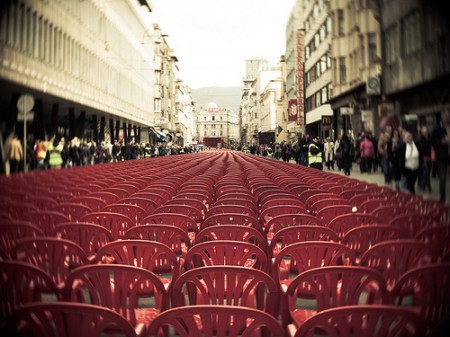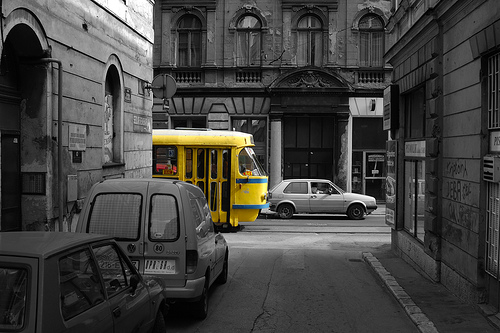Sarajevo 20 år etter
Av Olav Anders Øvrebø - 7.4.2012 13:52I går, 6. april, markerte Sarajevo at det er 20 år siden krigen startet. Hovedgaten var fylt av 11541 stoler, en for hver av byens innbyggere som ble drept i løpet av den over tre år lange beleiringen. APs journalist formidler stemningen:
While remembering the dead, many also cannot forget feeling that the international community had let them down during the war. All the world did was condemn the horrors in Bosnia and send food packages. What Sarajevo residents really wanted was an end to the death and destruction, the restoration of electricity, water and heating, a halt to the shelling and sniping every day. “Those chairs are for the international community,” former Bosnian vice president Ejup Ganic said. “The international community that did not help us during the war … it is a picture of the world somehow at that time. But life goes on. We have peace without justice.”
Ed Vulliamy fra The Guardian var en av journalistene som først oppdaget de serbiske konsentrasjonsleirene sommeren 1992. I årene siden har han fulgt mange av menneskene han møtte under krigen, og er nå aktuell med en ny bok om Bosnia – The War is Dead, Long Live the War. I boken, og i dagens Observer, forteller han om hvordan det har gått med seks av dem, og med landet:
“Reconciliation” and “post-conflict resolution” are buzzwords these days and a lucrative industry for the colonial international strata that still live, on tax-free salaries, in Sarajevo. But these words – reconciliation and resolution – are also lies, for what I found, in the absence of reckoning for these refugees and survivors, was post-conflict irresolution. Open wounds and nightmares that deepen with time, redeemed – if at all – not by any fantasy of reconciliation, but strength of will, family, alcohol and laughter among those who call themselves “the limbo people”.
 Innlegg
Innlegg
